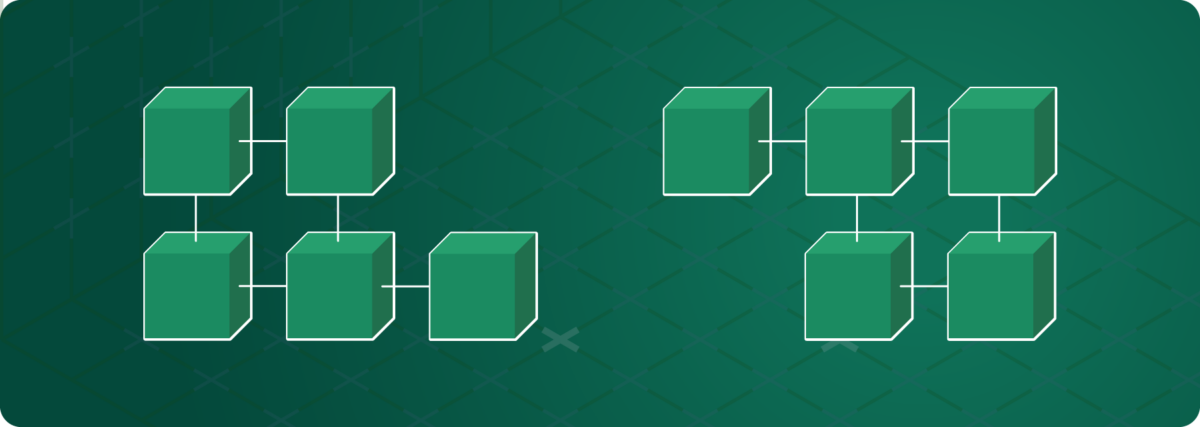
You probably hear or read about the term blockchain technology on a daily basis, right?
But have you ever asked yourself what this fuss about blockchain technology is all about? Or how blockchain technology works? And how did it manage to become such a buzzword in the crypto community in such a short period of time?
We have all the answers you are looking for below.
So, let’s dive in!

What is Blockchain Technology?
It’s fair to start from the basics by defining the term:
Blockchain technology is a structure that stores transactional records (known as the block) of the public in various databases (known as the chain) in a network connected through peer-to-peer nodes.
This storage is commonly known as a digital ledger. To authorize a transaction within this ledger, every owner should use a digital signature to make all the information highly secure.
To put it in simpler words:
Imagine the digital ledger as a Google spreadsheet that is shared among many computers in a network. The best part is that everyone can see the data, but they can’t corrupt it.

Who invented Blockchain Technology?
You might already know that Satoshi Nakamoto invented blockchain technology back in 2008 as its public transaction ledger for Bitcoin.
He created this decentralized Bitcoin ledger with the goal to help users control their own money, so no 3rd party, such as the government, can access or monitor it.

Top advantages of using Blockchain Technology
We selected the main advantages of this emerging technology:
– It’s highly secure because it uses a digital signature feature to conduct fraud-free transactions. This makes it impossible to change or corrupt an individual’s data without a specific digital signature.
– It’s a decentralized system that enables you to make smoother, safer, and faster transactions with the mutual consensus of users. You don’t need the approval of regulatory authorities as a government or bank for these transactions.
– There is a vast automation capability to automatically generate systematic actions, events, and payments when the trigger criteria are met.

How does Blockchain Technology work?
This is the next logical question, especially if you have noticed how many brands worldwide are integrating blockchain technology.
Before we dive into how it works, let’s take a step back and explain the top 3 technologies the blockchain technology is combined of:
– Cryptographic keys (private and public keys) to perform successful transactions between 2 parties).
– A peer-to-peer network containing a shared ledger.
– Computing operations to store the transactions and records of the network.
Let’s go back to how it works.
Hash encryption makes it impossible to hack information
Blockchain technology uses hashing and encryption to secure the data, primarily relying on the SHA256 algorithm to secure the sender’s address (public key), the receiver’s address, the transaction, and their private key details.
The encrypted information (also known as hash encryption) is transmitted worldwide, and after verification, it is added to the blockchain. Thanks to the SHA256 algorithm, it is almost impossible to hack the hash encryption.
Proof of Work to eliminate malicious uses of computing power
In a Blockchain, every block has 4 main headers:
– Previous Hash to locate the last block.
– Details of all the transactions that need to happen.
– An arbitrary number (also known as nonce) to differentiate the block’s hash address.
– A unique hash of the block address – 256-bit, 64 character length value.
Mining to ensure the safety of the entire blockchain
As you already know, in blockchain technology, adding transactional details to the present digital/public ledger is named mining.
In other words, mining involves generating the Hash of a block transaction to ensure the safety of the entire blockchain without the need for a central system.

What are the types of blockchain?
There are 4 different types of blockchains:
Type #1: Public Blockchain networks
The origin of cryptocurrencies is actually from public blockchains. Public blockchains allow users to eliminate specific challenges and issues, such as security flaws and centralization. The data is distributed across a peer-to-peer network and not stored in a single location.
Type #2: Private Blockchain networks
Private Blockchain Networks operate on closed networks. They are a perfect fit for private businesses and organizations that want to customize their accessibility authorization preferences and network parameters.
Type #3: Permissioned Blockchain networks (also known as hybrid blockchains)
These are private blockchains that allow special access for authorized individuals. Usually, organizations set up these blockchains to enable better structure when assigning who can participate in the network and in what transactions.
Type #4: Consortium blockchains
They are very similar to permissioned blockchains because they have both public and private components. These types of blockchains can be more complex to set up, but they offer better security and are optimal for collaboration with multiple organizations.

How to invest in Blockchain Technology?
If you came this far and you want to be part of this massive trend of investing in cryptocurrency, Crypto Dive In can help you every step of the way.
We have a broad portfolio of services for everyone that wants to achieve financial freedom by investing in cryptocurrencies.
All you need to do is check out our solutions page and select the one that best fits your needs. If you have any questions or doubts – we are always happy to help. :)


![Top 5 people in crypto you should start following today [2022 edition]](https://cryptodivein.com/wp-content/uploads/2022/05/220527_Top-5-Influencers_0-500x383.png)
